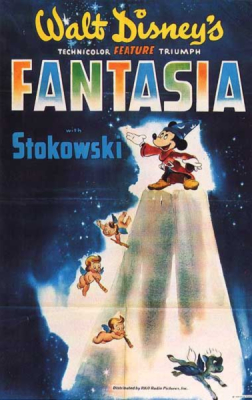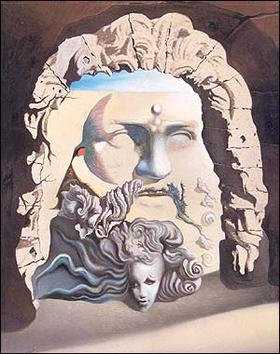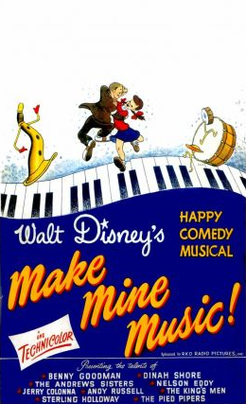Related Research Articles

Animation is a method by which still figures are manipulated so that they appear to be moving images. In traditional animation, images are drawn or painted by hand on transparent celluloid sheets to be photographed and exhibited on film. Today, many animations are made with computer-generated imagery (CGI). Computer animation can be very detailed 3D animation, while 2D computer animation can be used for stylistic reasons, low bandwidth, or faster real-time renderings. Other common animation methods apply a stop motion technique to two- and three-dimensional objects like paper cutouts, puppets, or clay figures.

Walter Elias Disney was an American animator, film producer and entrepreneur. A pioneer of the American animation industry, he introduced several developments in the production of cartoons. As a film producer, he holds the record for most Academy Awards earned and nominations by an individual. He was presented with two Golden Globe Special Achievement Awards and an Emmy Award, among other honors. Several of his films are included in the National Film Registry by the Library of Congress and have also been named as some of the greatest films ever by the American Film Institute.

Fantasia is a 1940 American animated musical anthology film produced and released by Walt Disney Productions, with story direction by Joe Grant and Dick Huemer and production supervision by Walt Disney and Ben Sharpsteen. The third Disney animated feature film, it consists of eight animated segments set to pieces of classical music conducted by Leopold Stokowski, seven of which are performed by the Philadelphia Orchestra. Music critic and composer Deems Taylor acts as the film's Master of Ceremonies who introduces each segment in live action.
The golden age of American animation was a period in the history of U.S. animation that began with the popularization of sound cartoons in 1928 and gradually ended from the late 1950s to early 1970s, where theatrical animated shorts began losing popularity to the newer medium of television animation, produced on cheaper budgets and in a more limited animation style by companies such as Hanna-Barbera, UPA, Jay Ward Productions, Terrytoons and DePatie-Freleng.

The Walt Disney Studios, located in Burbank, California, United States, serves as the corporate headquarters for The Walt Disney Company media conglomerate. The 51-acre studio lot also contains several sound stages, a backlot, and other filmmaking production facilities for Walt Disney Studios's motion picture production. The complex also houses the offices for the company's many divisions, with the exception of the 20th Century Studios, which remains on its namesake lot in Century City.
While the history of animation began much earlier, this article is concerned with the development of the medium after the emergence of celluloid film in 1888, as produced for theatrical screenings, television and (non-interactive) home entertainment.

Destino is an animated surrealist short film released in 2003 by Walt Disney Animation Studios. Destino is unique in that its production originally began in 1945, 58 years before its eventual completion in 2003. The project was originally a collaboration between Walt Disney and Spanish painter Salvador Dalí, and features music written by Mexican songwriter Armando Domínguez and performed by Mexican singer Dora Luz. It was included in the Animation Show of Shows in 2003.

Traditional animation is an animation technique in which each frame is drawn by hand. The technique was the dominant form of animation in cinema until computer animation.

Fantasia 2000 is a 1999 American animated musical anthology film produced by Walt Disney Feature Animation and released by Walt Disney Pictures. Produced by Roy E. Disney and Donald W. Ernst, it is the 38th Disney animated feature film and sequel to 1940's Fantasia. Like its predecessor, Fantasia 2000 consists of animated segments set to pieces of classical music. Celebrities including Steve Martin, Itzhak Perlman, Quincy Jones, Bette Midler, James Earl Jones, Penn & Teller, James Levine, and Angela Lansbury introduce a segment in live action scenes directed by Don Hahn.

Walt Disney Animation Studios (WDAS), sometimes shortened to Disney Animation, is an American animation studio that creates animated features and short films for The Walt Disney Company. The studio's current production logo features a scene from its first synchronized sound cartoon, Steamboat Willie (1928). Founded on October 16, 1923, by brothers Walt Disney and Roy O. Disney, it is the oldest-running animation studio in the world. It is currently organized as a division of Walt Disney Studios and is headquartered at the Roy E. Disney Animation Building at the Walt Disney Studios lot in Burbank, California. Since its foundation, the studio has produced 61 feature films, from Snow White and the Seven Dwarfs (1937) to Strange World (2022), and hundreds of short films.

Myron "Grim" Natwick was an American artist, animator, and film director. Natwick is best known for drawing the Fleischer Studios' most popular character, Betty Boop.

Make Mine Music is a 1946 American animated musical anthology film produced by Walt Disney and released by RKO Radio Pictures. It is the eighth Disney feature animated film, released on April 20, 1946.

Melody Time is a 1948 American live-action/animated musical anthology film produced by Walt Disney. The tenth Disney animated feature film, it was released to theatres by RKO Radio Pictures on May 27, 1948. Made up of seven segments set to popular music and folk music, the film is, like Make Mine Music before it, the popular music version of Fantasia. Melody Time, while not meeting the artistic accomplishments of Fantasia, was mildly successful. It is the fifth Disney package film following Saludos Amigos, The Three Caballeros, Make Mine Music, and Fun and Fancy Free.

Wolfgang Reitherman, also known and sometimes credited as Woolie Reitherman, was a German–American animator, director and producer and one of the "Nine Old Men" of core animators at Walt Disney Productions. He emerged as a key figure at Disney during the 1960s and 1970s, a transitionary period which saw the death of Walt Disney in 1966, with him serving as director and/or producer on eight consecutive Disney animated feature films from One Hundred and One Dalmatians through The Fox and the Hound.
Joe Grant was an American artist and writer.
An animation studio is a company producing animated media. The broadest such companies conceive of products to produce, own the physical equipment for production, employ operators for that equipment, and hold a major stake in the sales or rentals of the media produced. They also own rights over merchandising and creative rights for characters created/held by the company, much like authors holding copyrights. In some early cases, they also held patent rights over methods of animation used in certain studios that were used for boosting productivity. Overall, they are business concerns and can function as such in legal terms.
Simply Mad About the Mouse: A Musical Celebration of Imagination (ISBN 1-55890-217-1) is a 1991 direct-to-video release featuring top contemporary singers performing "classic Disney songs". The feature film was released on the 27th of September 1991, and the 35-minute-long series of music videos were released on VHS and LaserDisc. The music videos were exclusive to the video and the Disney Channel.

The Little Matchgirl is a 2006 animated short film produced by Walt Disney Animation Studios and released by Walt Disney Pictures, directed by Roger Allers and produced by Don Hahn. It is based on an original 1845 story of the same name by Hans Christian Andersen. It is the fifth Disney adaptation of an Andersen tale. It was nominated for the Academy Award for Best Animated Short but lost to The Danish Poet at the 79th Academy Awards.
The second wave of Walt Disney Treasures was released December 3, 2002. This was the final wave with the tin's individual number embossed on the tin.

Fantasia is an American media franchise owned by The Walt Disney Company that commenced in 1940 with the theatrical release of the film of the same name.
References
- ↑ Cotter, Bill (1997). The Wonderful World of Disney Television. Hyperion Books. pp. 161–162, 547. ISBN 0-7868-6359-5.
- ↑ "Makin' 'Em Move: Rare Behind the Scenes Footage of Vintage Animation Studios", Thunderbean, http://www.thunderbeananimation.com